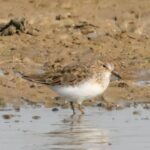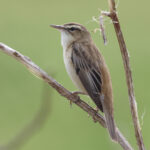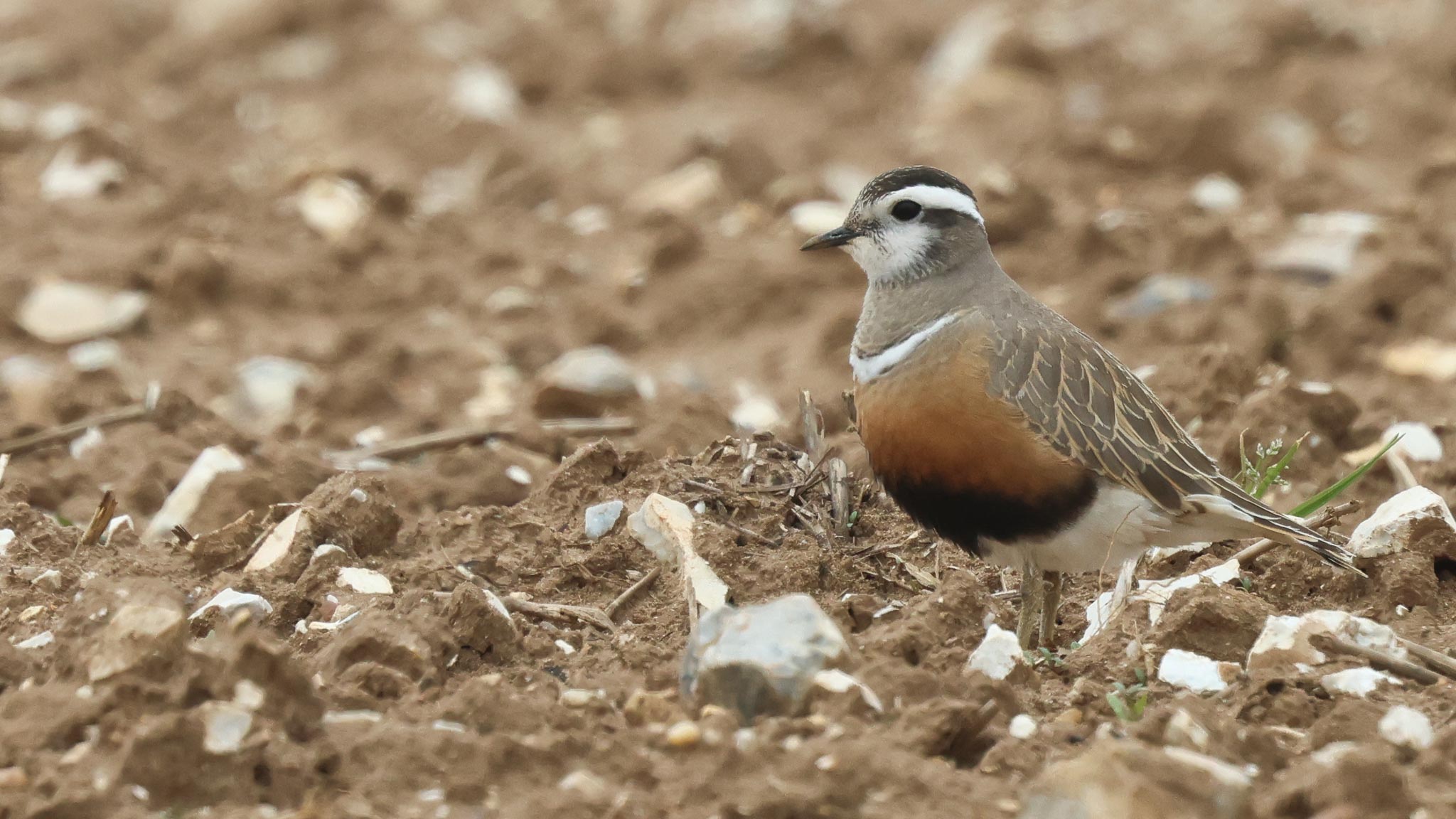A single day Wader Spectacular tour, with a visit up to the Wash coast to watch the swirling flocks of waders over high tide. It was a nice day, mostly bright and sunny, but a surprisingly cool start to the morning and with an increasingly fresh wind in the afternoon.
We had an early start, in order to get up to Snettisham in time to watch the incoming tide. When we made it out to the seawall, there was still plenty of exposed mud. A small flock of Golden Plover were roosting out in front of us before they took off and flew inland. There were a few small waders on the mud our side of the channel – Turnstones, Ringed Plovers, a couple of Knot and a handful of Dunlin. A couple of small flocks of Sanderling flew past.
There were lots of Black-tailed Godwits still feeding in the shallow water. Up towards the sailing club, the Bar-tailed Godwits were roosting behind a large flock of Oystercatchers. Looking through the scope, a few of them were still in bright rusty breeding plumage.
Further out in the middle of the mud, another large group of Oystercatchers were roosting, there white underparts catching the morning sun. The huge slick of Knot beyond were better camouflaged. There were 48,000 Knot counted here on the WeBS count yesterday, but not all of them were here yet. From time to time, some huge flocks of waders came up from the mud further round the Wash to the south, looking like clouds of smoke.
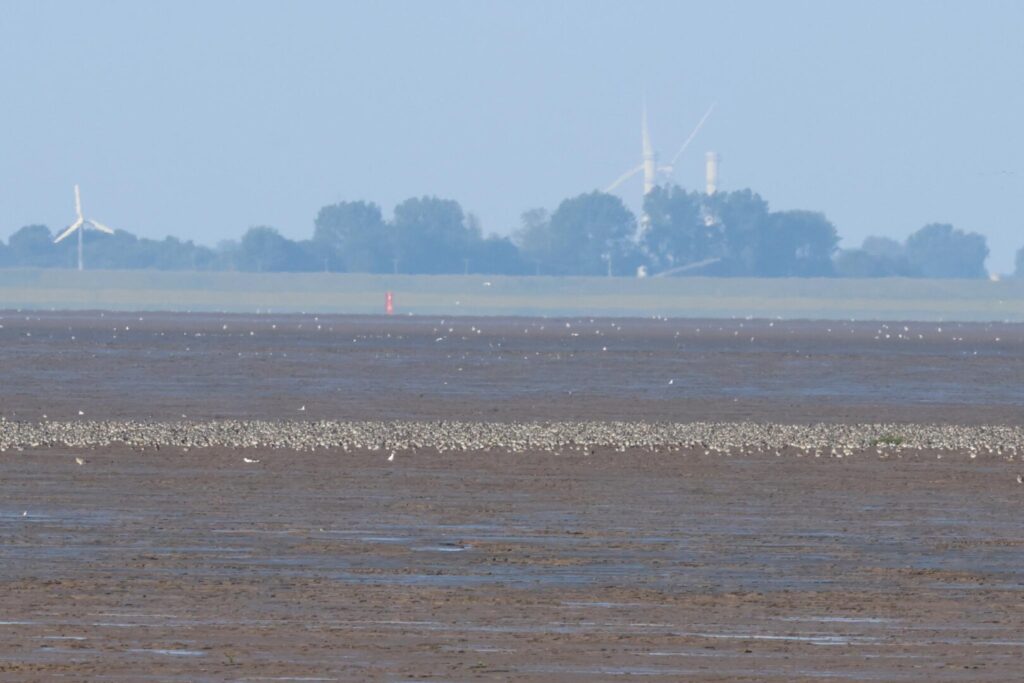
A trickle of Swallows flew past in front of us along the shoreline, heading south. They are starting to leave us already, heading back to Africa for the winter – autumn is just around the corner! Someone we know who had just walked in behind us called over to say they had just seen a Turtle Dove land on the bank not far from us. We walked down and could see it feeding in the flowers close to the track before a Rabbit spooked from the vegetation and flushed it as it sped off.
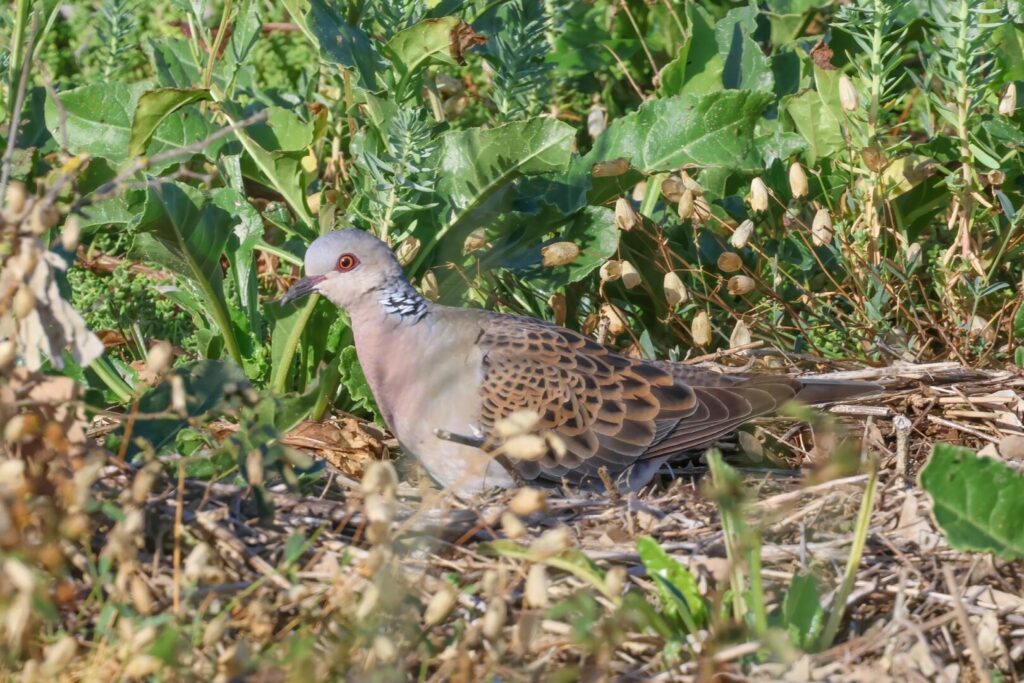
The tide was rising steadily now. The Black-tailed Godwits started to fly up from the shore first and headed off into the Pit to roost. They always give up early, as do the Redshanks, which flew past in small flocks calling. As the water rose up to cover where they were roosting, the Bar-tailed Godwits from up by the sailing club flew past us in lines, heading further down to find drier mud. They were followed shortly after by the Oystercatchers, which landed with the other flock already out in the middle.
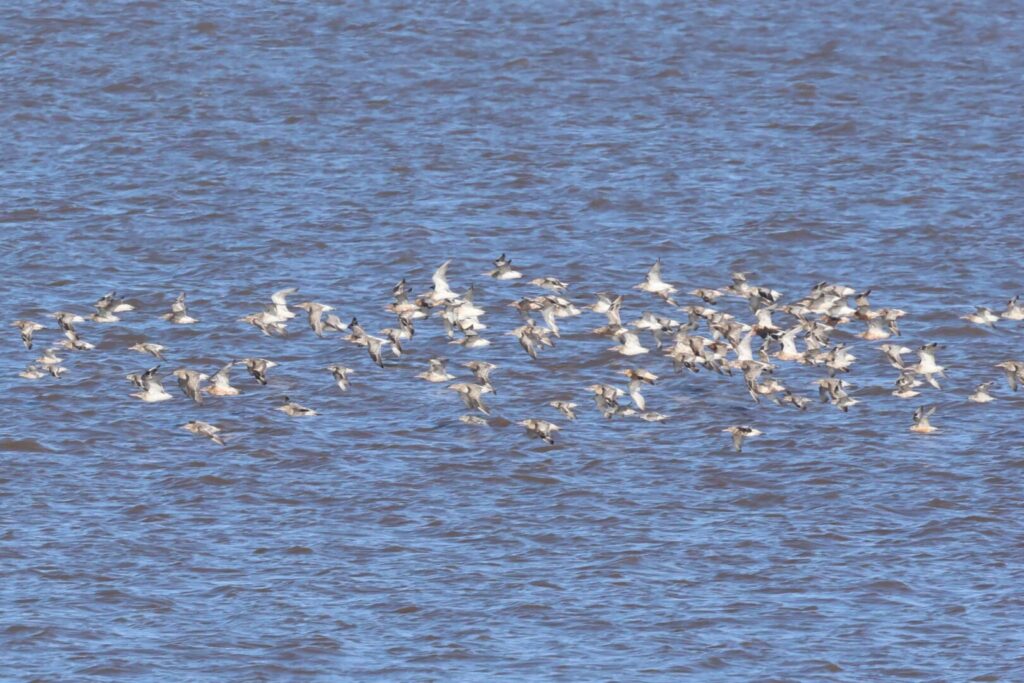
As we walked on further down, to stay ahead of the tide, another Turtle Dove flew up from the bank and off ahead of us down the shore. We stopped just before Rotary Hide to scan again. There were lots of Sanderling, Ringed Plover and a few Dunlin on the mud just beyond the channel but we couldn’t see anything with them. We turned the scope to watch the ‘March of the Oystercatchers‘, as they walked away from the rising tide, looking like the flock was flowing across the mud. In contrast, the Knot closest to the water periodically flew up and in over the rest, landing higher up on drier ground.
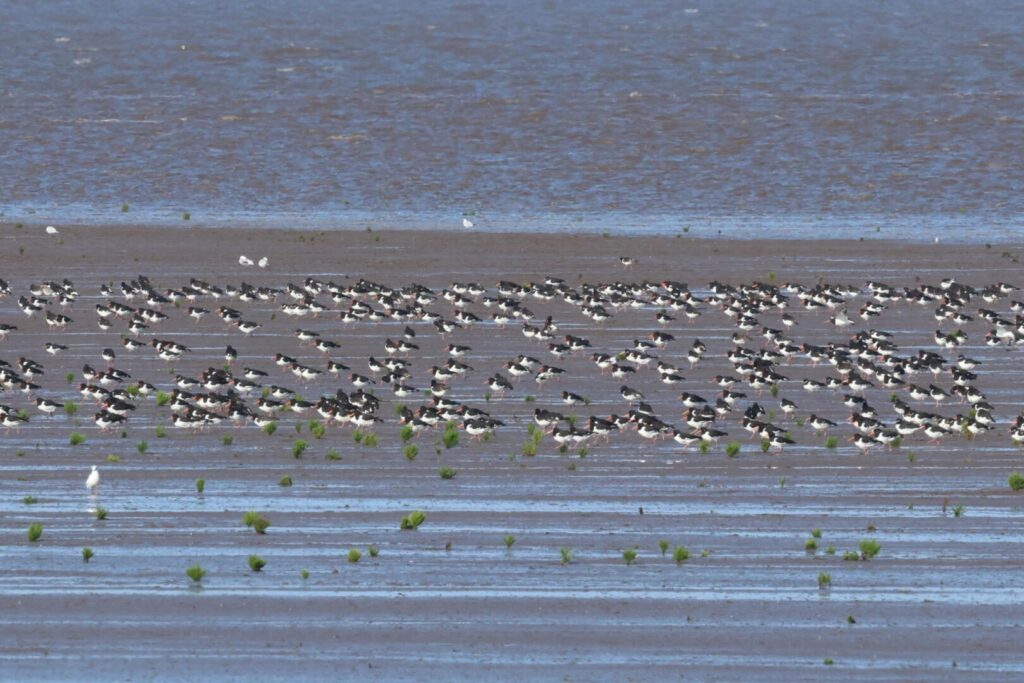
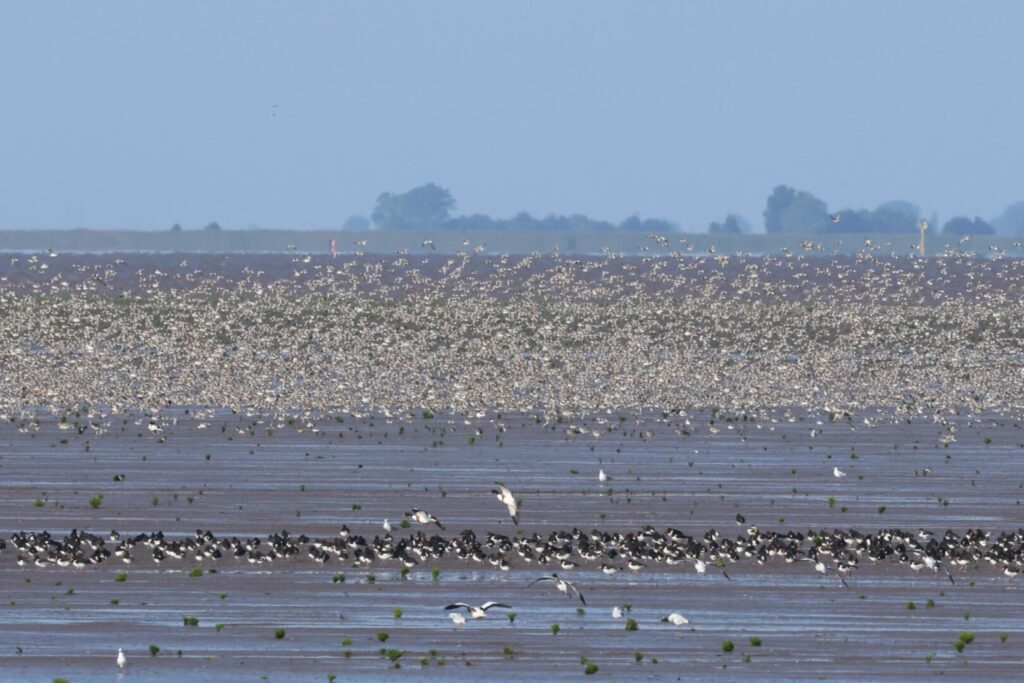
One of the locals put a message out to say they had found one of the White-rumped Sandpipers on the mud a little further down. So we went straight over and quickly got it in the scope, feeding on the mud just the other side of the channel. Compared to the nearby Dunlin, it was slightly smaller, slimmer and longer-winged, greyer above and cleaner white below. The birds were shifting constantly, flying further down in small groups and after a while we lost sight of it. A scarce visitor from North America, there have been a remarkable number of White-rumped Sandpipers here in recent weeks.
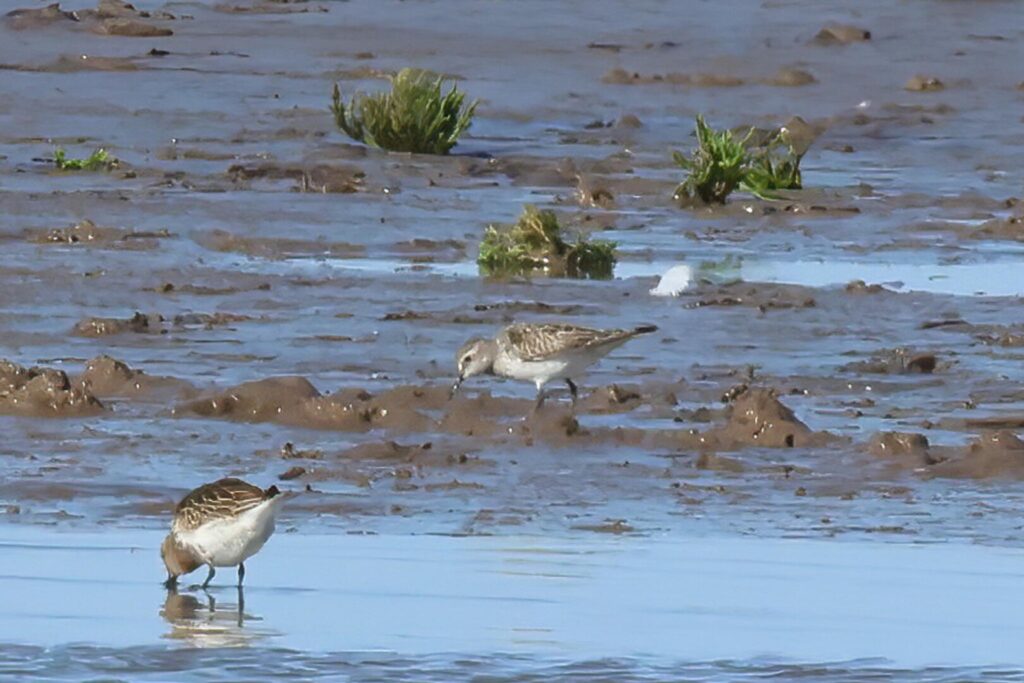
We continued on further towards Shore Hide, struggling to keep up with the tide now. From time to time, the Knot flew up in huge flocks, their numbers swelled now by more birds gathering from further down the Wash. There was no sign of anything chasing after them though, and very quickly they settled down again further from the water’s edge.
We picked up what was presumably the same White-rumped Sandpiper again and then watched it fly off down towards the far corner of the mud. Shortly after we picked up a second White-rumped Sandpiper which flew in from our right. We got it in the scope again, as it few on the mud opposite us, but it was hard to stay on now as the birds were constantly on the move now.
It was very busy here today, probably partly down to it being a Bank Holiday weekend. Also people who had planned to come yesterday may have been put off to today due to the weather (it rained yesterday!). Down by the corner, opposite Shore Hide, we managed to find a space from where we could watch the culmination of the Spectacular. The Oystercatchers were still marching away from the rising water, much closer to us now. They started to peel off and fly in over our heads, piping noisily.
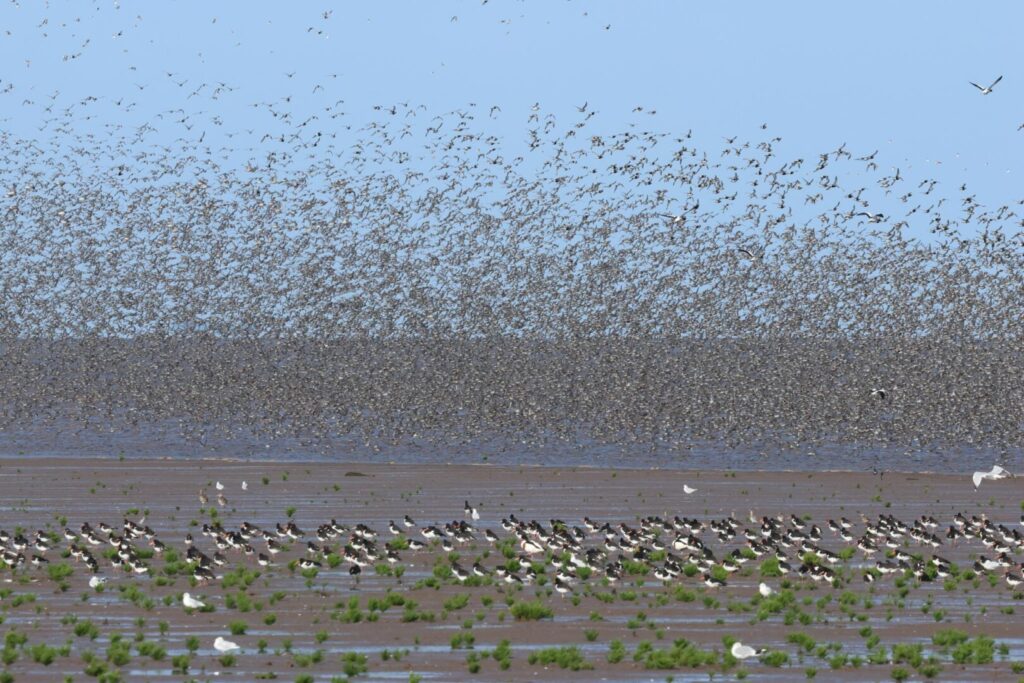
The Knot continued to lift in large groups and then resettle, but they were getting more and more tightly packed into the corner. Eventually, there was no room left for some of them to land. Tens of thousands of Knot poured out over the Wash in huge clouds. Some flew in low over us – we could hear the beating of their wings – and dropped down onto the Pit behind. But others towered up out over the water, higher and higher into the sky.
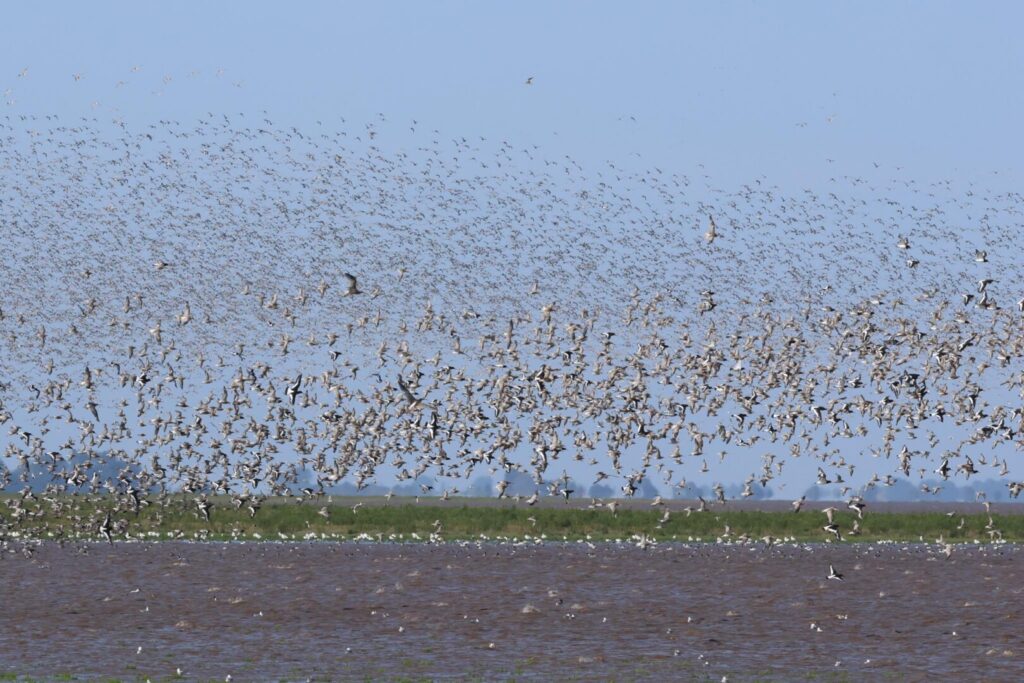
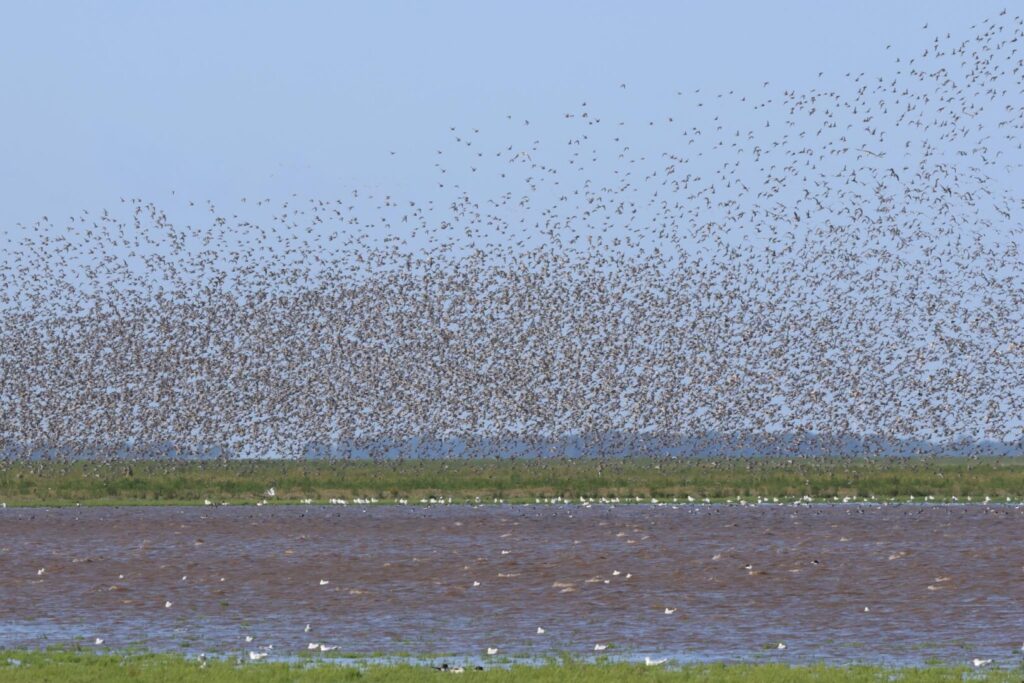
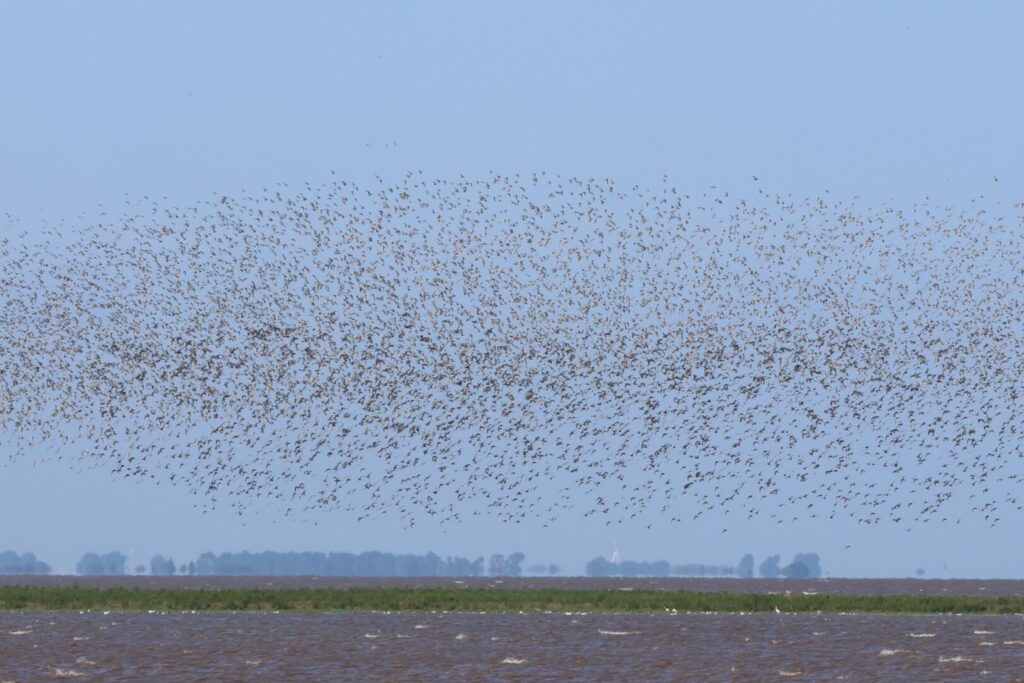
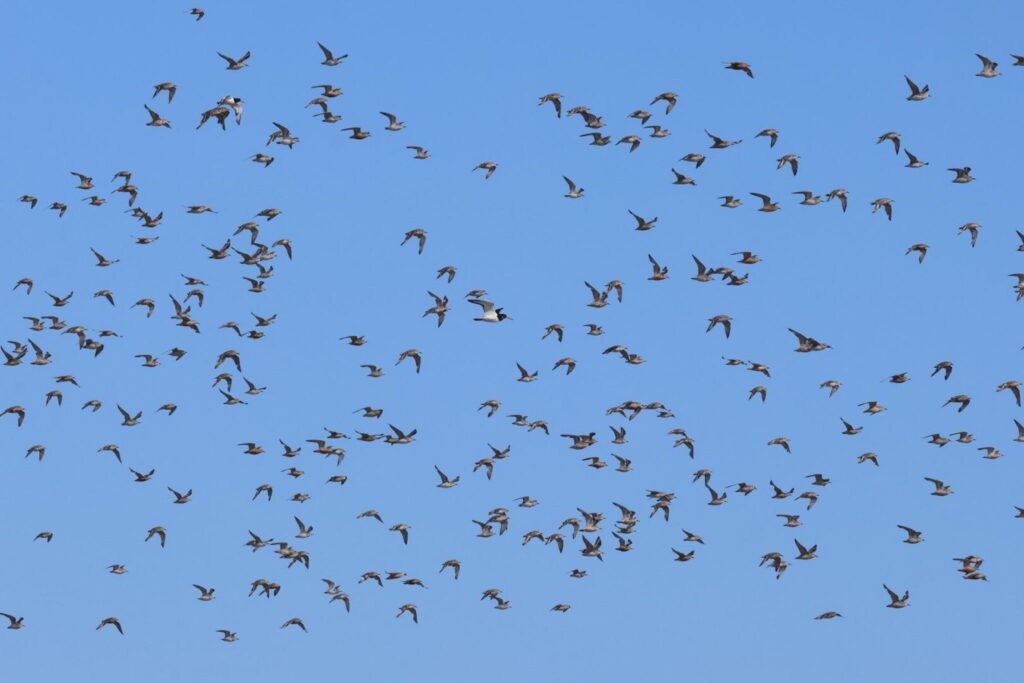
The remaining Knot continued to fly up and resettle back in the last corner of mud, where all the Curlews and Bar-tailed Godwits were packed. Even though some of them were up to their bellies in water, they were clearly reluctant to come into the Pit today. Eventually, the tide started to go slack, the strong SW wind probably enough to just hold the tide back from covering the last arc of mud, and everything settled down to roost.
We made our way in to Shore Hide. Just as we arrived, all the waders roosting on the island on the edge of the Pit just to the north spooked. They flew up and whirled round, but there was no sign of anything having a go at them and the birds on the other side of the water stayed put. Some landed again back on the island, but quite a lot of them flew off past the hide and down the Pit. We turned the scope on the remaining birds. Mostly Knot, several still in orange breeding plumage, and with quite a few Dunlin new, mostly adults still sporting their black summer bellies.
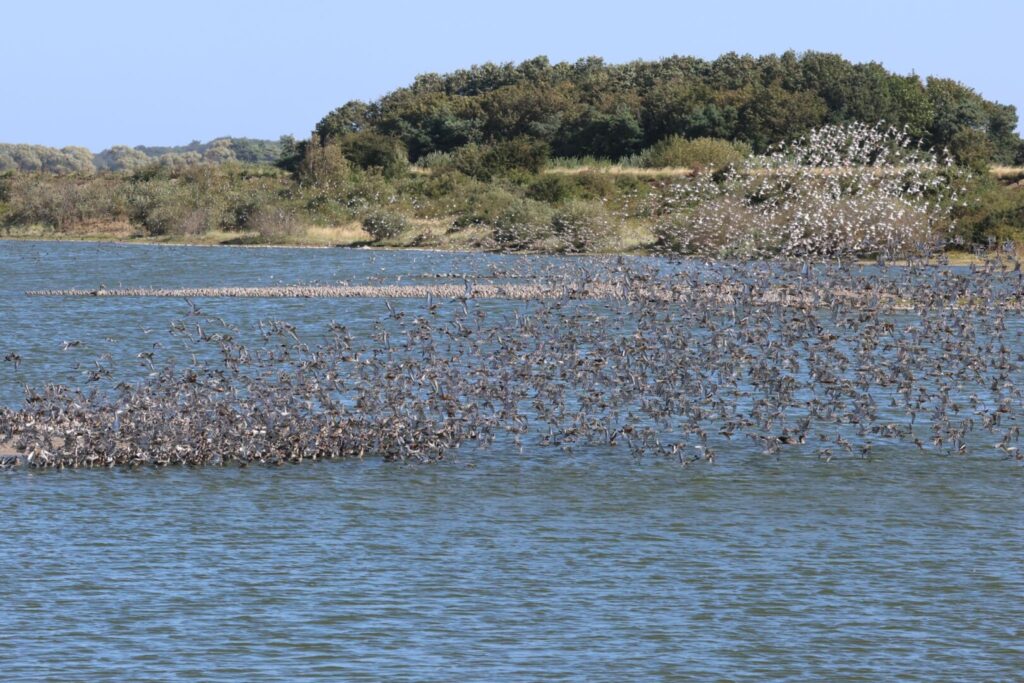
Out in the middle of the Pit, on the rocks with the Cormorants and Greylag Geese, the Spotted Redshanks were roosting in their usual spot. We got them in the scope. Most were in silvery grey and white non-breeding plumage already but one still retained some patchy black feathering on its underparts. From time to time, one woke up and flashed its long, needle fine bill. The Spoonbills were all asleep too, on the shingle bank over the far side.
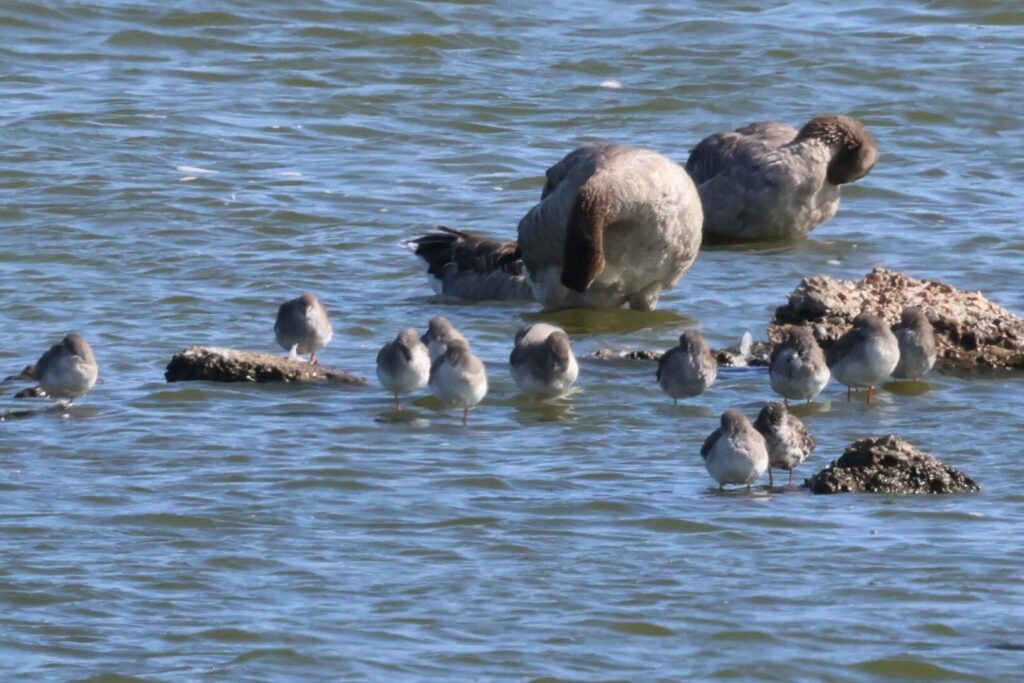
As we made our way back out of the hide, we could hear a Whimbrel calling and looked up to see it flying past out over the Wash. We turned and headed down along the path towards the boardwalk, stopping to look at the Sea Aster Bees swarming around the burrows in the sandy ground beside the track. Just before the boardwalk, a Stonechat was perched out on the top of the Suaeda and a large flock of Linnets flew round twittering.
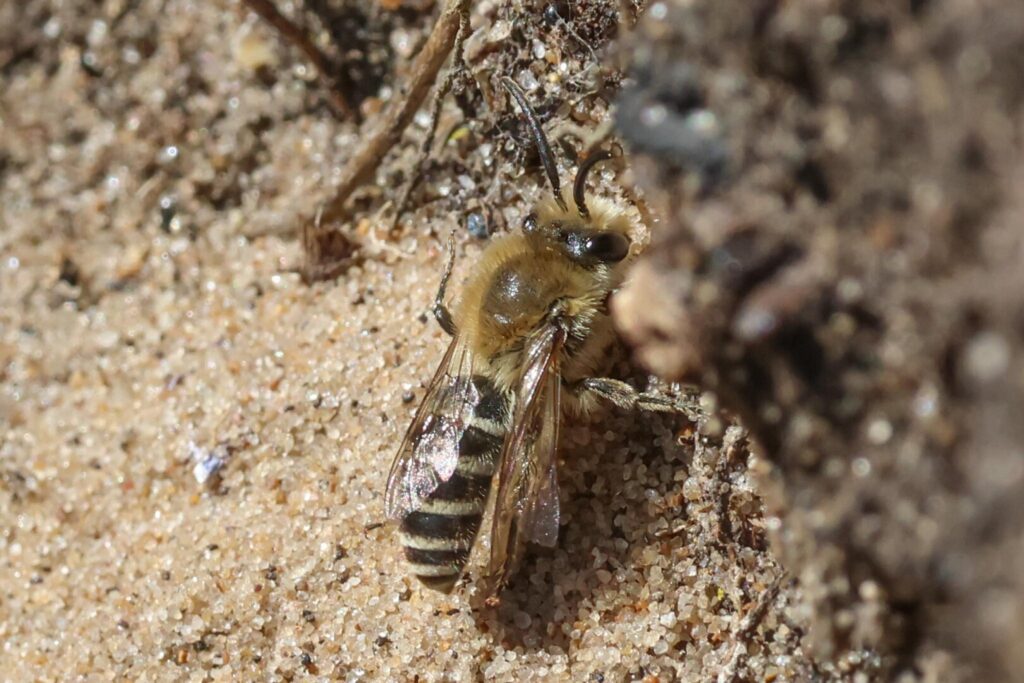
A Marsh Harrier was quartering out over the saltmarsh and drifted close to the roosting waders. All the Knot erupted into the sky. The Marsh Harrier had no interest in chasing after them and it looked like they might settle down again quite quickly. But the next thing we knew the huge flocks started twisting and turning out over the mud, flashing dark and light as they turned in the sunshine, making shapes in the sky. A juvenile Peregrine was chasing them.
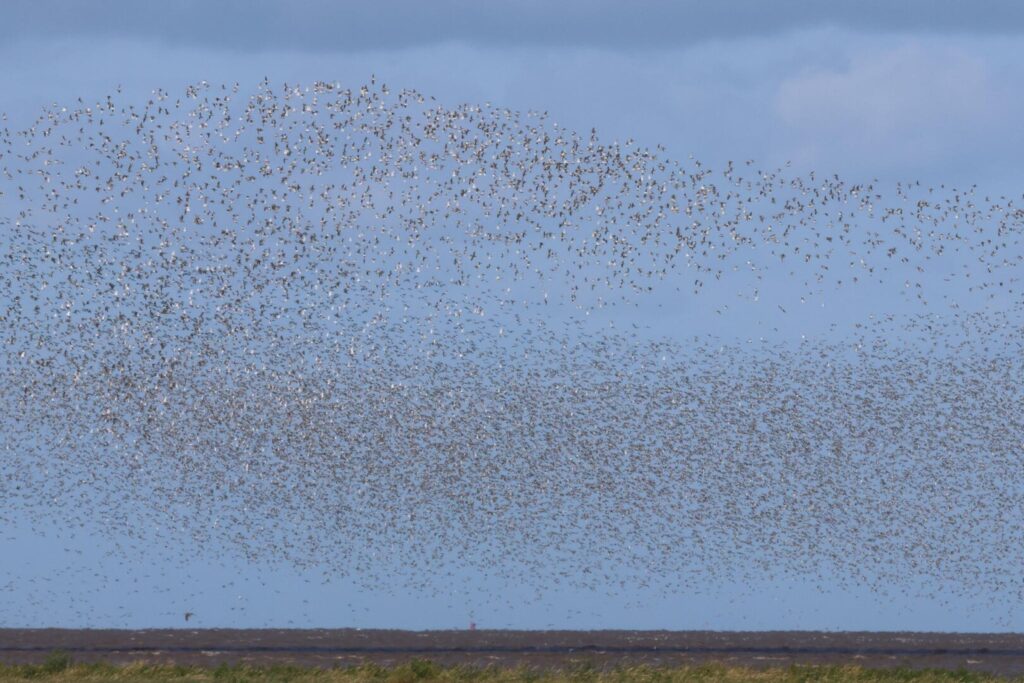
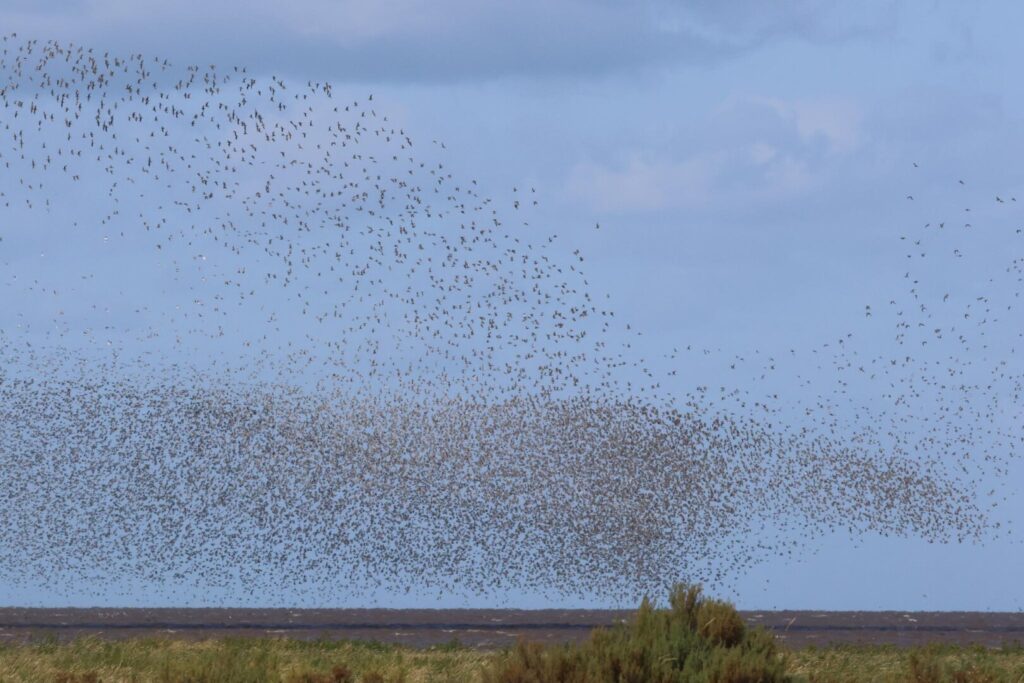
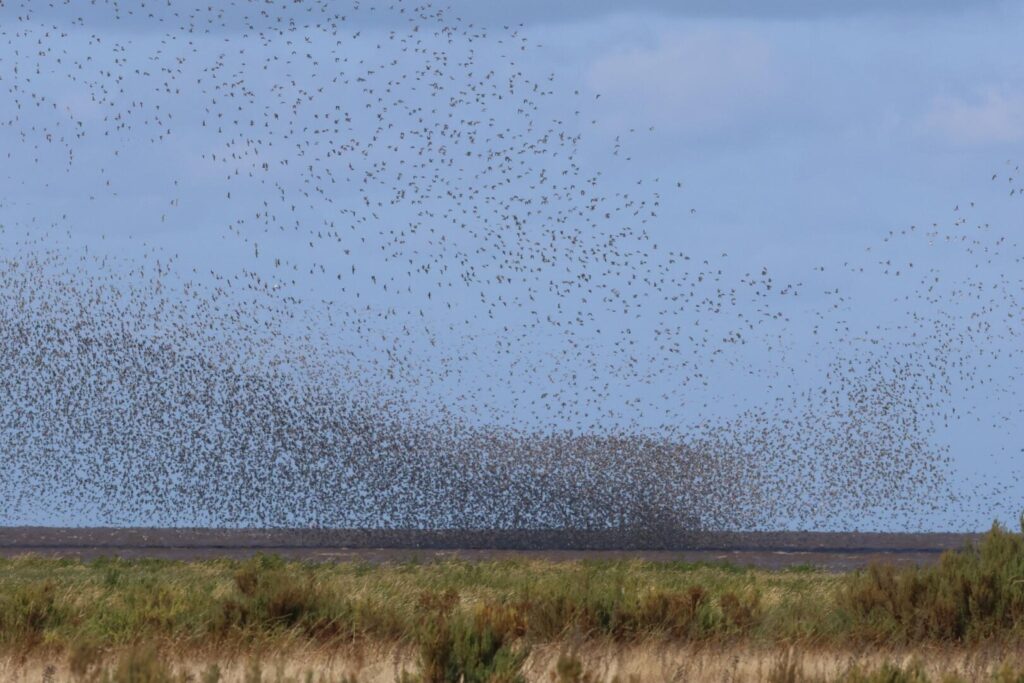
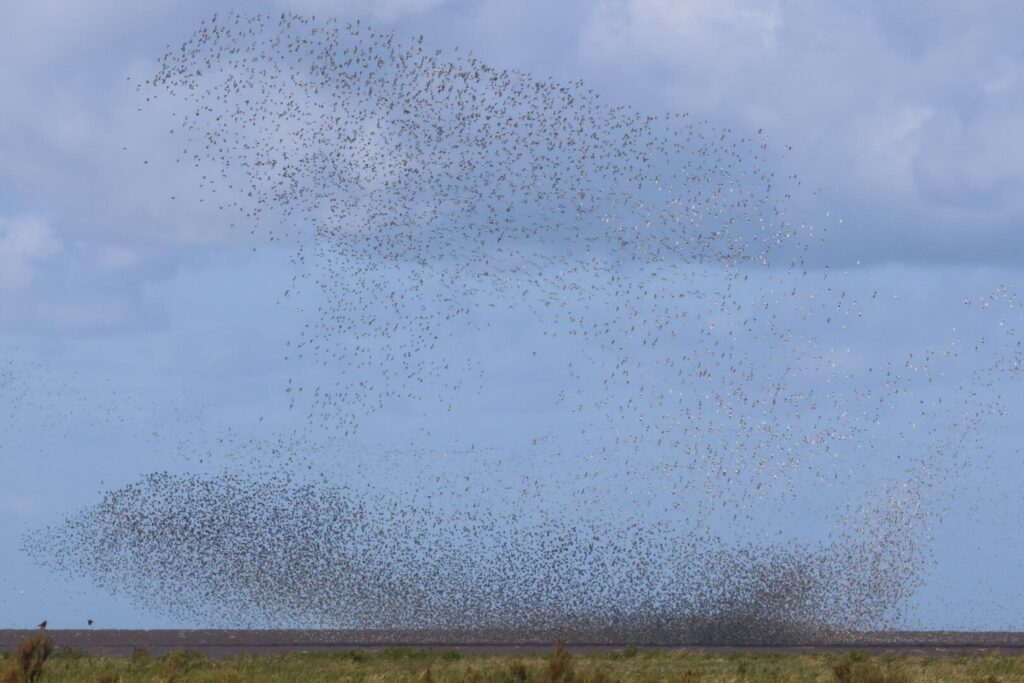
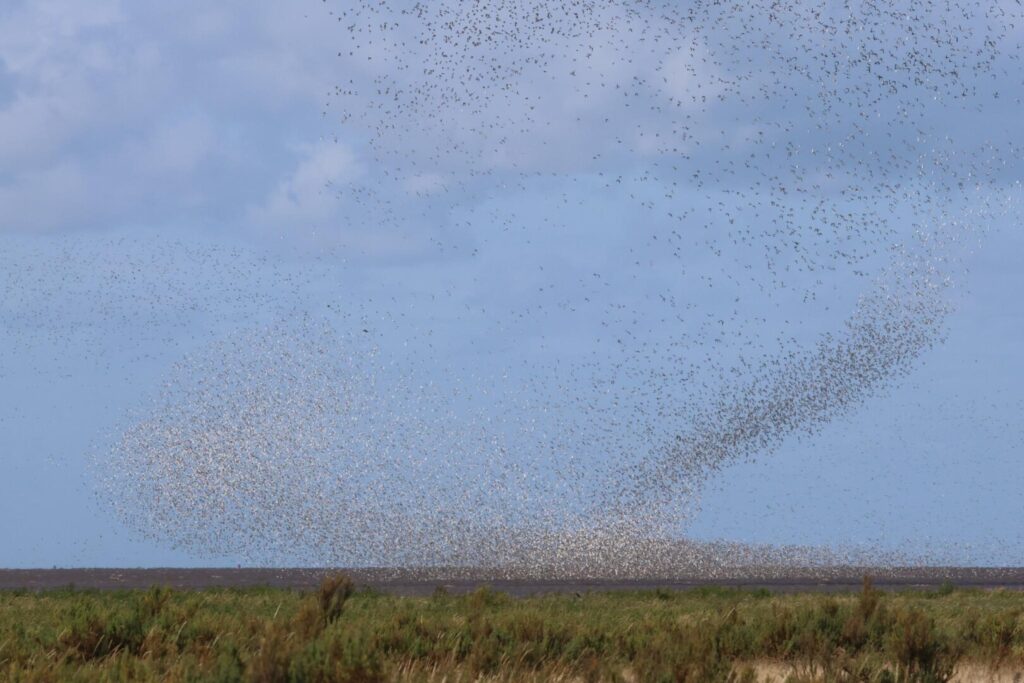
The Peregrine seemed to single out a lone wader and chased after it. The wader dropped down towards the water’s surface and the Peregrine stopped and hovered overhead, at which point it was mobbed by gulls. When the wader set off again, so did the Peregrine. It was a young bird, so not very experienced and after a while it gave up. The rest of the Knot dropped back down on the mud.
We walked on round and in to South Screen. There were lots of Oystercatchers roosting on the shingle bank and lots of waders on the islands, but mostly Black-tailed Godwits and Redshanks on the Pit today. Relatively few Knot had come in on this end of the Pit, so presumably they were still up high in the sky. Even though it is expending energy, they can easily spend the hour or so over high tide flying.
Two Green Sandpipers dropped in on the shore in front of the hide, but didn’t linger and flew off again south. We heard Greenshanks calling and one appeared where the Green Sandpipers had been earlier. It ran across the stones and on to the small pool, and a second Greenshank appeared from behind the Suaeda bushes on the shore, the two of them disappearing out of view together. Shortly after, they flew off out towards the Wash.
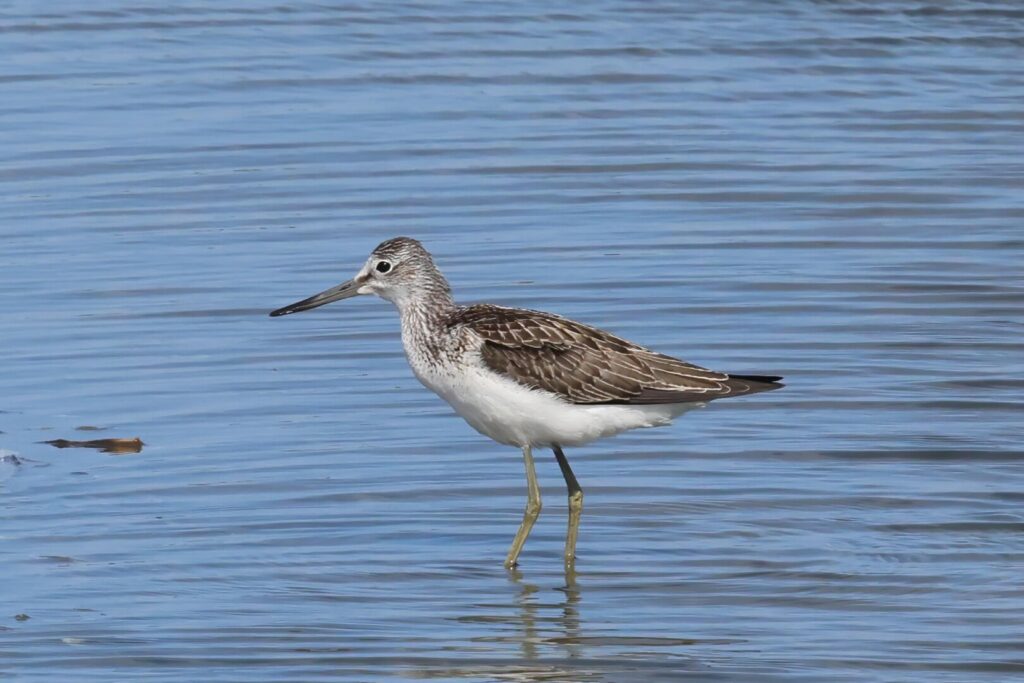
Then two Common Sandpipers appeared in exactly the same place and we watched them picking around on the stones with a Ringed Plover and a Turnstone. Four young Avocets flew in. A juvenile Ruff was on the next island over.
We couldn’t see anything different in front of Knot’s Landing, but we walked round to the hide for a quick look. If for no other reason, the view from the hide is pretty spectacular. A couple of Swallows were flying in and out from under the porch on the front and looking at the nest under the doorway we could see at least two juveniles looking out.
The tide was going out now so we made our way back out to the edge of the Wash. There were a few lines of Knot coming out from the Pit from the islands further north. With the wind behind it, the water had already receded quite some way. The waders had all redistributed themselves on the mud, out from the last corner, the Knot now distantly out on the water’s edge. The Grey Plover always seem to be distant here, but with the birds having spread out we had a proper view of them now through the scope, several with summer black bellies. A small group of Little Terns were roosting out in the middle.
We decided to make our way slowly back. A flock of Spoonbills flew up out of the Pit and circled up over the Wash. Up towards Rotary Hide, we stopped to look at a small roosting flock of gulls. There were several Common Terns in with them, which were relatively easy to pick out. We counted at least four Mediterranean Gulls too, but with them all asleep, they were harder to distinguish, set apart from the Black-headed Gulls by their pure white wingtips. Another Whimbrel called as it flew north over the mud. back up towards the chalets, there were lots of Sanderling still roosting on the rocks.
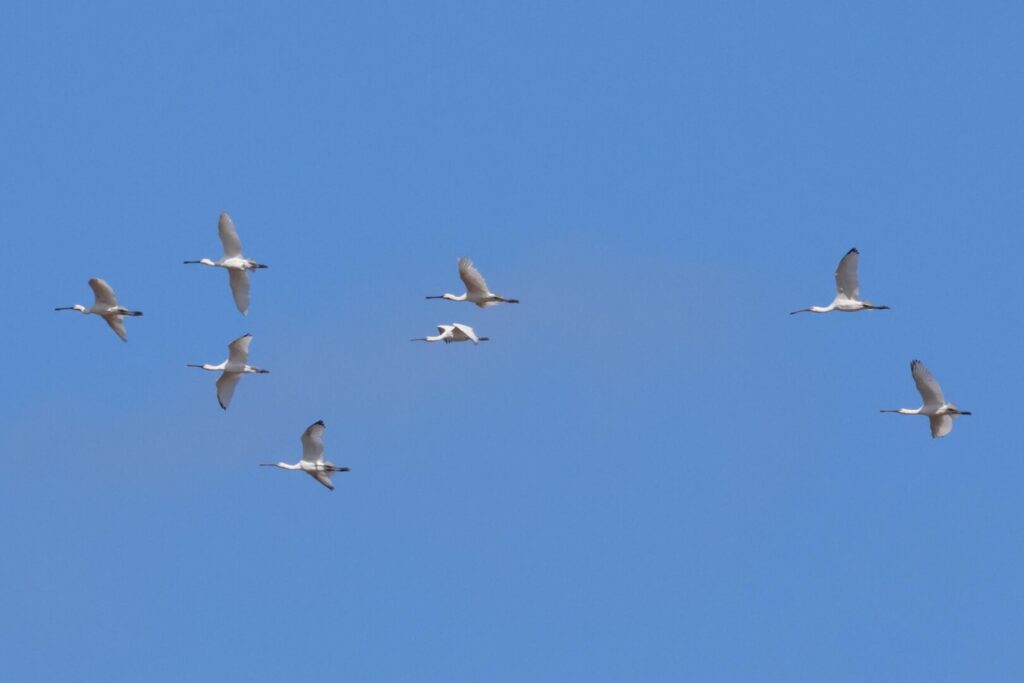
We made our way round to Titchwell next. The car park was the fullest we have seen it all year, but we eventually managed to find a space. After a stop to use the facilities, we headed for the picnic area and a break for lunch. After lunch, we headed out to have a quick look at the reserve. A Marsh Harrier was quartering out over the Thornham saltmarsh as we passed. It was a bit too windy for Bearded Tits today, and there were just a few Coot and Gadwall out on the Reedbed Pool and channels.
There had apparently been a Curlew Sandpiper on the Freshmarsh in front of Island Hide earlier, so we went straight in there to look for it. We were told by one of the volunteers that it had just disappeared behind the island, so we decided to wait for it to come out. There were several Dunlin and Ruff feeding on the mud in front of the hide and Avocets sweeping their bills side to side in the shallow water just behind them. More Ruff and several Common Snipe were along the edge of the reeds. Two Spoonbills were fast asleep behind the island, as they usually are!
After a while, the Curlew Sandpiper reappeared around the corner of the island and picked its way along the mud in front. A moulting adult, it was still sporting the remains of its rusty breeding plumage on its underparts. Amazing to think that just a couple of weeks ago it was probably up in Central Siberia. Then it was spooked and flew back round behind. A nice addition to our already excellent wader list for the day.
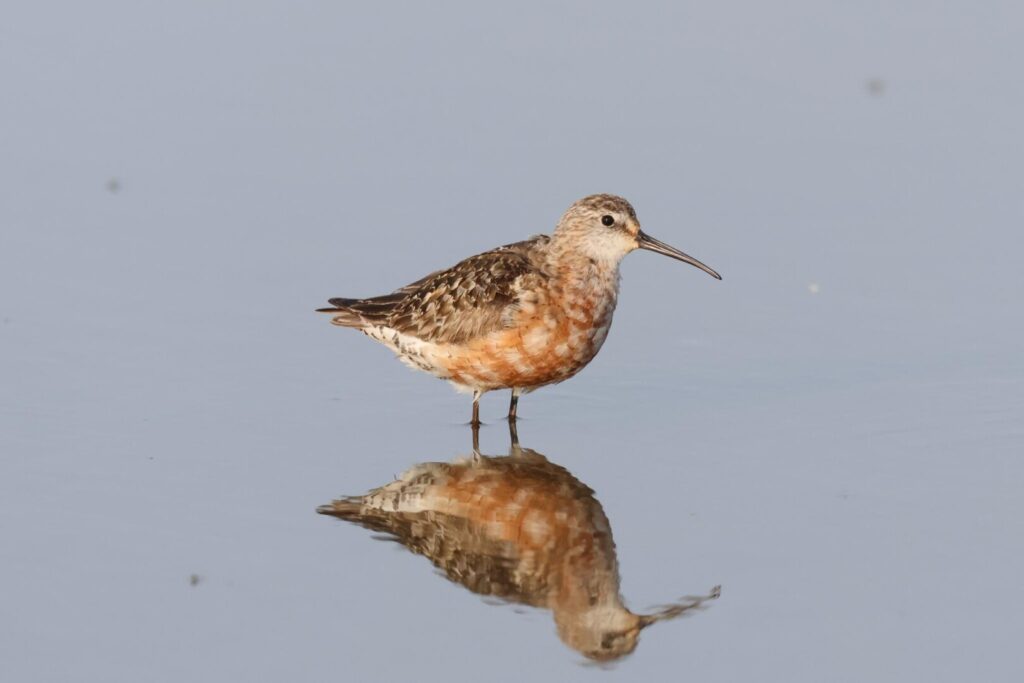
The volunteer then spotted a Bearded Tit working its way round the base of the reeds beyond the hide. When it got further round so we could see it too, we managed to get it in the scope. A juvenile, tawny brown and lacking the moustache which is only shown by adult males, it was nice to catch up with today. They are never easy to see, so having said we were unlikely to see one due to the windy conditions, it was an unexpected but very welcome bonus!
Back out on the main path, there were a few Teal in the near corner of the next compartment. A quick scan revealed a juvenile Little Ringed Plover too, well camouflaged along the muddy edge of the bund. Looking back towards where we had been earlier, we could see the Curlew Sandpiper again now, round the back of the island in front of the hide. We got it in the scope now for a better look.
As we made our way down along the path to Parrinder Hide, we somehow managed to miss the Wasp Spiders, probably as we had to keep stopping to let people past the other way. We decided to have another look on the way back. Scanning from the hide, we quickly picked up the Black-winged Stilt of unknown origin over in the far corner. Bearing a closed ring, it has probably escaped from captivity, but where exactly it has come from no-one seems to know. There were several Golden Plover on the islands in front of the reeds and a Greenshank dropped in too.
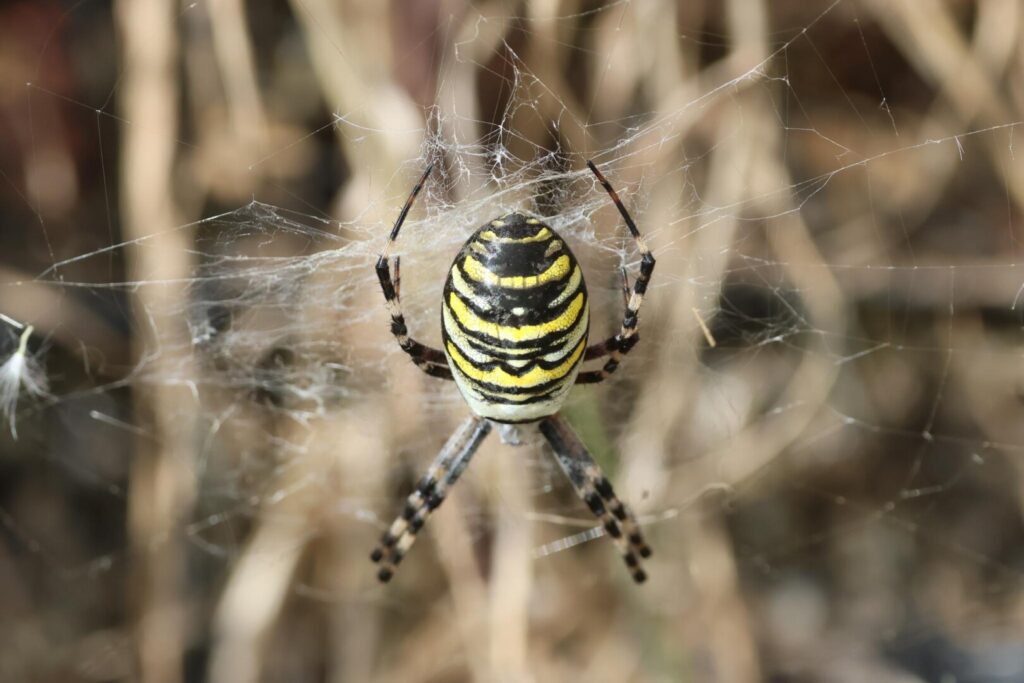
Unfortunately, we were out of time and had to start making our way back. Walking more slowly and scanning more carefully along the path back towards the West Bank, we quickly located one of the Wasp Spiders on its web this time. An impressive beast and a nice way to finish as we headed back to the car park. It had certainly been another Spectacular day.
We will be adding dates for Wader Spectacular tours in 2025, shortly. If you would like to come out on one of these please keep an eye on our Tours page for our latest tours, or contact us to be added to the mailing list.



